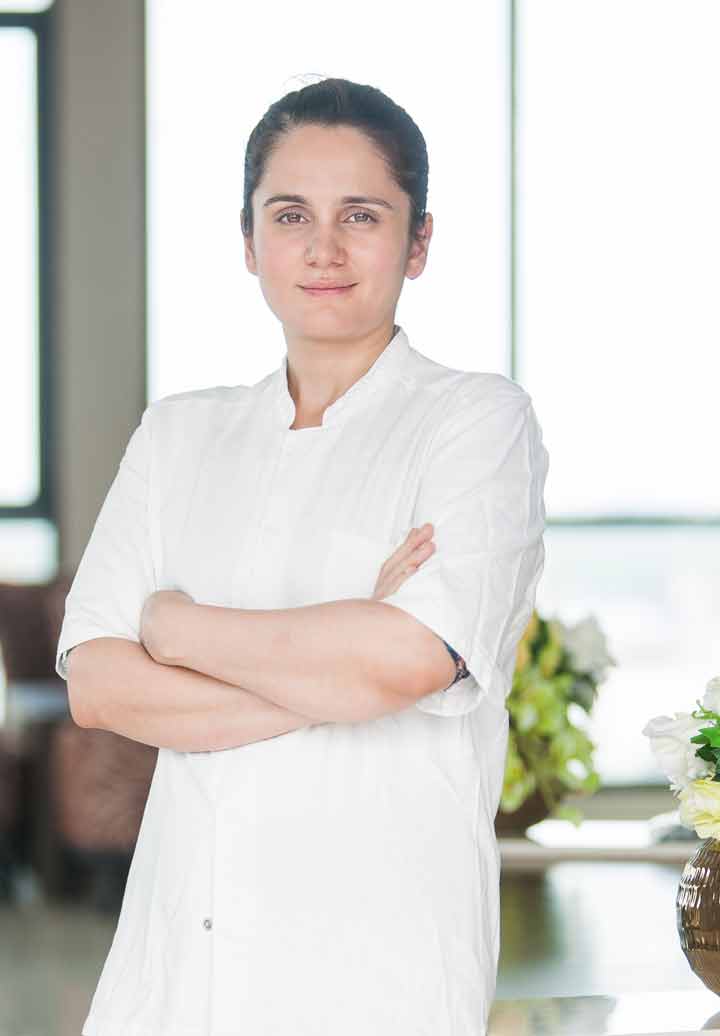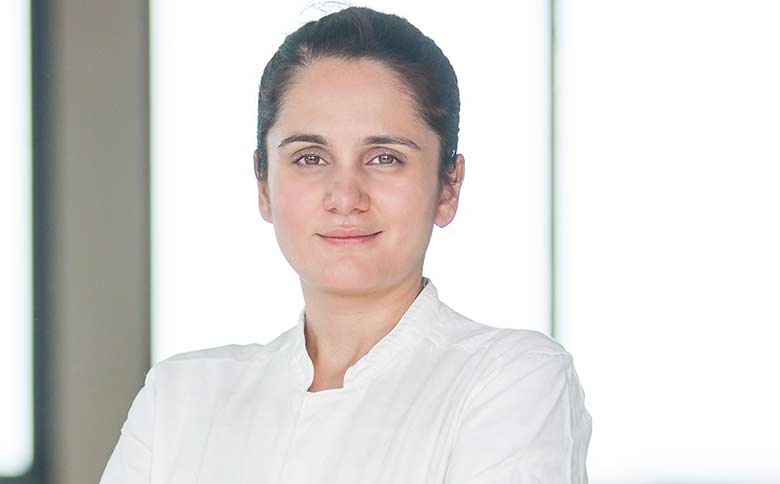
Let me start by saying that I’m a self-confessed food nerd. Where other people see ingredients, I see possibility. And where people see chefs, I see rockstars. Chef Garima Arora, executive chef and founder of Gaa in Bangkok, who recently won the title of elitTMVodka Asia’s Best Female Chef 2019 is one of those rockstars. And when I got the chance to interview her, I obviously jumped at it.
My fangirling obvz doesn’t quite end there. She is the first Indian woman chef to be awarded a Michelin Star. She also has the distinct honour of working alongside culinary superstars, Rene Redzepi and Gaggan Anand. Legit, right? It is even cooler that more women are being celebrated in what many say is a male-dominated field. But even more impressive is that she doesn’t have the time to worry about being a woman in a male-dominated space. Instead, Gaa is her primary focus. In other words, she literally has bigger fish to fry. Lulz. (I apologise. If I see a food pun, I can’t help but go for it.) She lets her work do the talking proving that if you don’t like the status quo, you should do something to change it.
Excerpts from the interview with Chef Garima Arora
Why is there a divide when it comes to cooking professionally even though women are believed to hold the fort in a home kitchen?
First of all, I don’t think there is a conspiracy to keep women out of the kitchen. Women are already here. There are women in the entry level but they do not stick around because they are forced to make unrealistic choices. At some point in their lives, they need to choose between having a family or working these crazy hours and it is absolutely impossible to have both.
Historically, women have had very little representation in professional kitchens. Even though that’s changing now, do you still feel an added pressure to prove yourself as a woman chef?
I’ve been lucky in that I haven’t had to think about my gender when I’ve worked in kitchens around the globe. While I’ve never personally experienced discrimination, I am acutely aware of the fact that being a woman in the kitchen means one has to work all that much harder. I have just been focused on what we want to achieve at Gaa, rather than worry about whether something isn’t getting done because I’m a woman in a traditionally male-dominated space.
What prompted you to make the shift from media into the culinary world? Is there anything about your previous profession that you’ve carried over to your current one?
I was a mass media student at Jai Hind College. After graduating from college and before I started my job in journalism, I took a trip to Singapore. When I returned, I gathered my family and cooked them a big hotpot. It was such a fun evening. I realised then that what I really wanted to do was talk to people through the medium of food. I still joined my job as a journalist covering the pharmaceuticals beat, but I kind of knew all along that one day I wanted to open my own restaurant. Six months in, I knew it was time to make the switch. I joined Le Cordon Bleu Paris shortly after. Cooking is a young person’s game as it is very demanding especially physically. I wanted to do it while I can give 100%. I think I definitely carried over my curiosity, for sure. That never changes.
You’ve said that working in Noma‘s kitchen and with a visionary like René Redzepi has taught you how to approach food cerebrally? Can you elaborate?
I’ve been very lucky to work with some of the most important names in the industry. My time at Noma shaped me and changed me, not only as a cook but also as a person. Under René, I learnt how to think of food intellectually, and not just as a physical task. We constantly ask ourselves why and how as we try to create flavours and dishes that never exist before. My takeaway from my time with him was that food should be meaningful.
Tell us about one of your most stand-out memories from working at Noma?
I remember when I first started out at Noma, René came up to me and told me that I could always talk to him if anyone makes me feel uncomfortable in the kitchen. Nothing ever happened, but I really appreciated that about him. He just does everything with so much integrity.
What was it like working as a second in command to Gaggan Anand?
Gaggan’s kitchen taught me the beauty of Asian hospitality. It really is the best service in the world, in my opinion.
You managed to get a Michelin star in a mere two years of opening Gaa, which is no small feat. Was this one of your goals? How did you react to the news that you were the first Indian woman chef to be awarded one?
I was absolutely ecstatic. The first thing I did after receiving the news from Michelin was to call my father. He is definitely my most important influence in terms of food and cooking. To celebrate the news, we had a beer pong session! I don’t know how this idea came about, but my team pulled it off that night converting our bar table into a beer pong table. To be honest, the news didn’t sink until a lot of days after. I didn’t open Gaa, hoping to win awards, but I’m certainly very humbled by the recognition that the Michelin star has afforded me. My hope is that this opens doors to both women and men to pursue their dreams. Both the Michelin Star and Asia’s 50 Best accolades have been very exciting, but now it’s business as usual for us. We celebrated and got back to work the next day. They serve as a drive for us to push harder.
What’s your creative process? Are there specific food memories and experiences from your past that you draw from when you are conceptualising a new dish?
Gaa is definitely technique-driven, meaning I don’t chase after flavours quite as much. Our process often times starts with us working with a technique first and sometimes, it starts with produce. Somewhere down the line the two meet. We draw inspiration from our age-old Indian cooking techniques like pickling and fermentation. I believe we need to start looking within our own culture and stop aping the West. There are so many resources in our heritage that can be used to create something completely new.
How do you marry Thai and Indian flavour profiles?
I think what’s most surprising about the food at Gaa is that it showcases Indian and Thai food are more alike than one would imagine. This allows me to marry the two cuisines and weave my Indian heritage into the food of where I currently live, rather seamlessly. At the end of the day, Indian and Thai cooking cultures have a lot of similarities, and this allows each dish to stand out.
Tell us about one dish that has an interesting origin story?
There are so many dishes on the menu that stand out, but there are two that come to mind here. The first is our corn dish, which was also the first dish to make its way to the Gaa menu when we opened! It is almost our signature right now, as a result. The Mumbai bhutta inspired this dish. Young corns are grilled and seasoned with the same spice rub used in Mumbai. These corns are paired with corn milk. The idea here is to elevate that warm fuzzy feeling of eating bhutta during the monsoon in Mumbai to a fine dining experience.
Another one that really deserves special mention is our jackfruit dish. We grill unripe jackfruit until it is tender and juicy (much like meat). It is then served with roti with ripe jackfruit in it. Jackfruit is eaten ripe in Thailand, but in India, it’s common to cook it unripened as well. Both countries eat jackfruit, but at different stages so when people eat this dish, you see how differently they react to it. This dish not only combines techniques and flavours but also cultures. This dish takes me back to my childhood when my mom used to cook unripe jackfruit and told us it was chicken!
Don’t forget to follow @missmalinilifestyle for more!

